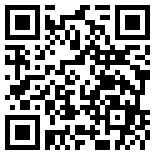Key Takeaways
- Consumers are losing more money to fraud as scams become more complex and convincing.
- Experts say bank impersonation scams are surging in frequency and effectiveness.
- Fraudsters are starting to use AI tools to make scams harder to spot.
Kelley Niemi woke up on a recent Sunday morning to discover that several unfamiliar purchases of edible decorations had been made with her Bank of America debit card. She called the bank, reported them and went on with her day.
By Tuesday, the IT professional and local youth cheer squad president was walking into a regional bank branch in her small Massachusetts town, withdrawing all $13,347 in cash from the cheer team’s account and unwittingly depositing it into a scammer’s bank account at an ATM.
In between, a nightmarishly elaborate fraud scheme unfolded, and it illustrates just how sophisticated bank scams have become in 2025.
Experts say fraudsters have more tools than ever in their arsenal, and it can be difficult for consumers – and banks – to keep up. Whether it’s the emergence of AI or simply the result of years of practice, scammers have gotten much better at convincing us to part with our money.
In Niemi’s case, what started with a few unauthorized charges quickly snowballed into a much larger scam that seemed to involve multiple fraudsters.
‘I Was Being Bombarded’
On Monday morning, the day after she noticed the fraudulent charges, Niemi called Bank of America again. She had already canceled her debit card, but she wanted to file a dispute claim and hopefully get the unauthorized charges reversed.
Shortly after that call, she received a text message from what appeared to be the bank, asking her to verify two more transactions she didn’t recognize. She responded “No” to the text, and then got a message saying the bank would be calling her. This message wasn’t from her bank, but from a fraudster.
This type of scam text is relatively common, experts say. A fraudster often mimics an alert that you might actually get from your bank and sometimes even spoofs the phone number of a branch, as Niemi says they did in this case.
However, most scammers just send a batch of these out, claiming to be from a major bank and playing the odds that some recipients are actually customers of that particular institution. This text seemed to be targeted and timed.
Niemi was already communicating with the bank about actual fraud charges – probably made by the same scammers – so she didn’t find this alert unusual. Instead, it accelerated her sense of urgency.
Several minutes later, a caller claiming to be from Bank of America’s fraud department was explaining to her that her account had been compromised. The caller then transferred Niemi to a “higher fraud department” where a second person informed her that another account under her name – the youth cheer program’s account – was also at risk. However, that account was held at a small local bank, not at Bank of America. The person said he would transfer Niemi to the local bank’s fraud department.
Looking back on it, Niemi says this was where she should have become suspicious. Why would one bank transfer her to another bank? How would it know about a completely separate account? She later learned the local bank doesn’t even have its own fraud department.
At this point, she was fielding a flurry of calls and text messages from both banks, also while calling the banks herself. On several occasions, she would be speaking with one person claiming to be a bank representative, only to get another incoming call that looked to be from the same bank.
“I was being bombarded,” Niemi says. “I was getting calls from both banks at the same time, from both the fake people and the real people.”
She was caught in an elaborate bank impersonation scam, one that bank fraud experts say is occurring with increased frequency.
“Bank impersonation scams have probably surged more than any other recently,” says Darius Kingsley, head of consumer banking practices at JPMorgan Chase. “Impersonation scams have just gotten, unfortunately, better and better and better over the past five years.”
One of the most effective tactics that scammers use, Kingsley says, is to tell the customer that the bank itself is being investigated for fraud.
That’s what happens next in Niemi’s story.
In one call where Niemi thought she was speaking with the local bank’s fraud department, Niemi was told that several managers at the bank were now suspected of stealing customers’ money. She was told to immediately go to the branch, withdraw all of the money from the cheer team’s account, and deposit it into a new account that would be safe, the person said. He told her that because bank employees may be involved in the fraud, she should not say anything about it to people at the branch. He told her he had set up a new account for her at Chase Bank, since accounts at the local bank were no longer safe.
On Tuesday, Niemi walked into the local branch, withdrew the money from the cheer account, and then deposited it at a nearby Chase ATM, in what she believed was her new account.
The people claiming to be the local bank’s fraud department told her they would be calling her at 12:30 p.m. on Wednesday to provide login details for her new account. When that time passed without a call, an increasingly panicked Niemi called the number that had been calling her. When someone answered, Niemi demanded that she get access to her new account immediately. The person told her he would transfer her, but instead the call was disconnected. When she called back, she got a message saying the number was no longer in service.
She says at this point it sank in that all of the fundraising money for the cheer team was likely gone. She filed a report with the local police, and the investigation is ongoing.
Niemi says the entire ordeal caused her to lose trust in any communication she receives, whether from a bank or another company or government agency.
“I don’t answer the phone,” Niemi says. “I don’t believe text messages. I’m investigating everything myself on my own. I don’t trust anyone at this point.”
A Troubling Trend
Scammers have been especially active and effective in recent years.
Consumers reported losing more than $12.5 billion to fraud in 2024, according to the Federal Trade Commission. That’s a 25% increase from the prior year.
However, the total number of fraud reports remained nearly the same from 2023 to 2024. What changed was the percentage of fraud attempts that succeeded. In 2023, 27% of fraud reports resulted in a loss of money, while that figure jumped to 38% in 2024.
Now in 2025, the number of scams appears be rising again, according to data compiled by the Better Business Bureau, which fields consumer reports of fraud through its “Scam Tracker” tool. Through the first half of the year, the BBB has seen a 13.6% increase in fraud reports compared with the same period last year, says BBB spokesperson Melanie McGovern. (Fraud reports made to the BBB are passed along to the FTC and are included in FTC data.)
“Directionally, it’s not good, both in terms of frequency and severity,” says Kingsley.
‘We Are Entering an Era of Scams’
Experts say bank fraud has evolved significantly over the past decade. In the past, fraudsters would often attempt to get access to your bank account information, steal the money in the account and that would be the end of it. Now, they are much more likely to try to trick you into doing it for them.
“Traditional cases where the criminal is collecting your credentials, going into your account and emptying it are very rare these days,” says Uri Rivner, CEO and co-founder of Refine Intelligence, which makes software that helps banks prevent fraud. “What’s very prevalent are all sorts of scams where you part ways with your money, but it’s you actually moving the money, meaning it’s fully authorized by you. You go into your bank account and you move money to the criminals.
“What banks have been fighting for decades, account takeover, is now becoming almost obsolete, and we are entering an era of scams,” says Rivner.
Account takeovers still play a role in the process. Nowadays, a scammer will often use a compromised account as a vessel to move money stolen as part of a larger scam. For example, that final account Niemi deposited money into was likely an account that had already been taken over.
It’s another indication of how scams are getting more complex, experts say.
“Where I see the scams evolving is the overall sophistication of them,” says Kingsley. “Customers are seeing stuff from their ‘bank’ that looks and feels really real in a way that it just didn’t a few years ago.”
How Banks Are Fighting Back
Rivner says one of the most interesting new tools banks are using to protect customers from scams is called behavioral biometrics. This security technology essentially tracks a customer’s movements and actions when they are banking online or on the bank’s app to try to determine whether they are acting in an abnormal manner. For example, the bank’s app may notice if you are constantly moving your phone from your ear to a typing position, which could be a sign that you’re being guided or given instructions. In other cases, the technology may detect that typing speed or mouse movements don’t match your usual patterns.
“It’s actually tracking the way you operate in online banking or mobile banking,” says Rivner. “Do you show any signs of stress? Do you show hesitation? Do you show being guided by someone? It’s very useful against those impersonation scams.”
Bank fraud prevention officials say they are using a wide array of tools to combat scams.
“For us, it’s about monitoring,” says Jen Martin, head of banking fraud and disputes at Citizens Bank. “At any point in time I need to know for my consumers, ‘Are you who you say you are and should you be doing that transaction?’ We have a whole suite of layered tools doing those types of checks today, and we’re constantly monitoring for when fraud attack patterns change, and then deploying new strategies and rules and products to get after the new trends.”
Of course, any talk about the future of scams and how to fight them needs to include the 800-pound bot in the room. Fraudsters are leveraging AI to increase their productivity so effectively, your boss would be proud. That is, if the scammers weren’t using AI to pretend to be your boss and urgently asking you to load up on Target gift cards.
Experts say scammers are quickly adding AI tools to their criminal quiver. With the help of AI, they can clone voices of relatives. They can create fake videos to convince you to donate to fake charities. They can polish up the prose on that phony email so it no longer asks you to “kindly” follow their misspelled instructions.
“Anything that can be deepfaked will be deepfaked,” says Ben Colman, CEO and co-founder of Reality Defender, a tech company that works with top financial institutions to detect deepfakes and other AI-generated threats in real time.
Colman says deepfakes such as voice-cloning can be used for bank fraud in several ways. He says fraudsters can use AI tools to potentially bypass a bank’s authentication systems, perhaps by cloning the voice of a real customer. Once verified, they could reset a password, access an account or execute a wire transfer.
Alternatively, he says scammers can use deepfakes to fool a customer into believing they are a relative in trouble or that they are a bank representative.
Colman says five years ago when his company was starting out, investors and potential clients weren’t necessarily convinced that deepfake fraud would become a significant financial issue. In the past year or two, he says he’s noticed an industry-wide shift, and many banks are getting more aggressive in defending against AI threats.
How You Can Protect Yourself Against Bank Scams
Experts offer several tips to help you avoid falling victim to today’s sophisticated bank scams.
Don’t Panic
An alert from your bank can create a sense of urgency and angst in just about anyone. If your account has potentially been compromised, it’s natural to want to resolve the situation as quickly as possible. But experts say this is exactly what fraudsters are counting on.
“Fear is a really good motivator,” Kingsley says.
Instead of responding to a text or following instructions on a phone call, give yourself some time to consider the situation. It can help to ask a friend or relative to review the communication.
“Just take a few minutes and think through and ask yourself, ‘Does this really seem real?'” says Martin. “And if it doesn’t, try to validate it some other way or delete it.”
Look Up Your Bank’s Number and Call It
Scams often count on you responding to a text, email or phone call. Whenever you get a message that appears to be from your bank, try to make it a habit to avoid responding directly. Instead, look up your bank’s number and call it. This puts you back in control of the situation.
“If your bank’s calling you and then asking for a lot of information that you think, ‘Wait, my bank should really know that,’ just hang up,” says Martin. “Hang up and call your bank and validate if it was real. Even if it is us, hang up on us and call us back.”
Don’t Move Your Money
Scammers will often try to convince you that your money is at risk in your account and that you should move it to another account. But Kingsley says this is a clear indication that you’re not speaking with your actual bank.
“We will never ask you to pay yourself or move money from one account to another,” says Kingsley. “That is just never going to happen.”
Kingsley says customers sometimes will be so convinced that a fraudster’s story is real, they won’t even believe bankers at their branch when they warn that a transaction is likely a scam. This became such an issue at Chase that the bank now keeps a stack of paper flyers at each branch that describes the most common bank scams. He says the flyers have so far been an effective tool in what he calls “breaking the spell.”
‘Absolutely Mortified’
Niemi’s personality fits what you might expect from someone who dedicates countless hours to a youth cheer teams. She’s enthusiastic, positive and cares deeply about the kids in the program she has helped build. She agreed to tell her story to hopefully help others avoid falling for similar scams.
But she says the fraud ordeal has impacted her financial health as well as other aspects of her life, and she has accepted that the money likely will never be recovered.
“I have lost sleep, I’ve lost hair, I’ve lost weight,” Niemi says. “I am absolutely mortified that I fell for this.”
Her identity was stolen as part of the scam. She offered to resign as cheer president, but the program’s board members told her they wanted her to stay. She says the cheer teams will participate in the coming season, but she worries whether they can afford the cost if they qualify for the national competition, a feat two of the teams accomplished last year.
She says she’s doing what she can to move forward.
“It’s awful,” Niemi says. “But I’m not the first, and I’m sure I won’t be the last.”
Source: https://www.usnews.com/banking/articles/bank-scams-are-getting-way-more-sophisticated
























Post comments (0)